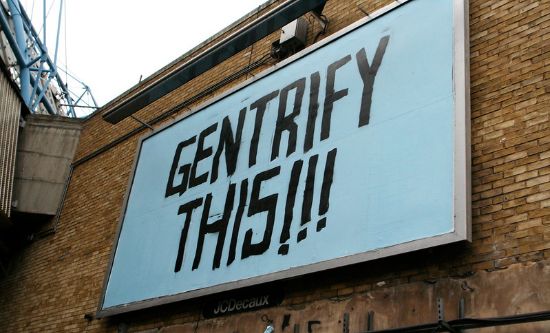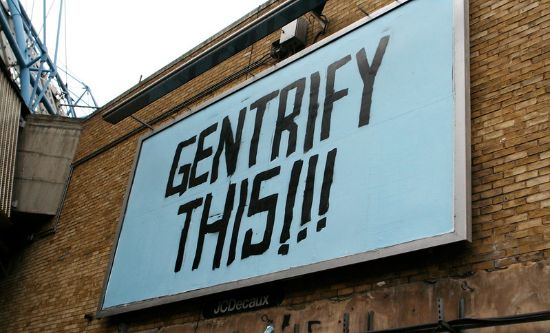
In October 2021, the Pandora Papers highlighted the City of London as the money-laundering capital of the world. They exposed the central role the UK property market plays in allowing wealthy corporations and individuals to secretly transfer and invest their capital while hiding behind shell companies based in largely British offshore tax havens, thus avoiding both tax and scrutiny. Three quarters of all properties in Britain linked to corruption are owned by companies registered in tax havens (Bloomberg 21 December 2020). In April 2021, the Financial Times described London as ‘the global hotspot for luxury home sales’. Meanwhile the flood of overseas finance into the UK property market has driven up the price of land and fuelled the wholesale destruction of council housing, forcing out the working class and stoking the housing crisis we see today.
It’s a rich man’s world
The $4bn worth of secret transactions identified in the Pandora Papers are only a tiny fraction of the £170bn of UK property estimated to be owned offshore. Despite the hype about ‘corrupt’ money, the reality is that whatever its provenance, it is all surplus value plundered from the exploitation of the working class and oppressed people of the world. To capitalism, it ultimately makes little odds whether it is acquired through the arms trade and drugs trafficking, the aggressive marketing of pharmaceuticals, the privatisation of a nation’s assets or more formally ‘legitimate’ means. This is the normal operation of capitalism and the lines between what is licensed or forbidden are deliberately blurred. But wherever the money comes from, the wealthy have vast quantities of it sloshing around and they need to funnel it into channels where it can expand. With productive sources of profitable investment in short supply, the UK property market has become, in effect, their piggy-bank – one offering eyewatering levels of returns and, with the judicious use of tax havens and the active collusion of a London-based army of accountants, politicians, lawyers and estate agents, one that is both highly secure and highly secretive.
In 2020 the super-rich bought more homes in London than anywhere else in the world, spending $4bn on ‘super prime’ properties – those priced at $10m or more. The huge sums of money released onto the market during the pandemic were undoubtedly a factor in this splurge. Roughly 100 billionaires, with a combined wealth of $253bn, now live in the capital. Estate agents Knight Frank points out, ‘Where they choose to buy signals as much about the relative attractiveness of a city’s tax regime or its safety as a place to store wealth as it does about liveability’. Investors – particularly those from a resurgent East Asian elite – are also getting in on the act. 1% of total housing stock in England and Wales is owned by investors from Hong Kong, Singapore and Malaysia (FT 12 November 2021). This is, says leading estate agent Savills, ‘a reflection of significant levels of growth in global wealth which are looking for the relative stability of bricks and mortar, particularly somewhere with a robust legal system like the UK’. This ‘robust legal system’ is designed to protect property rights and not ask too many questions about the provenance of funds; alongside a lightly regulated market and low taxes, it has proved irresistible to the world’s owners of wealth.
The official outcry over the Pandora Papers resembles the scene in Casablanca where Captain Renault announces of Rick’s Café, ‘I’m shocked – shocked! – to find gambling is going on here!’, as he pockets his casino winnings. Already in December 2020 Britain’s National Crime Agency was warning of luxury London homes that: ‘The high amounts of money that can be moved in one transaction and the appreciation in value, along with the enhanced lifestyle, make them very attractive to criminals.’
The great fire sale of London
‘I want London to be to the billionaires what the jungles of Sumatra are to the orangutan. It is their natural habitat.’ (Boris Johnson, then Mayor of London, 2014)
In Alpha City, his 2020 examination of how London became the prime location for the world’s super-rich, Rowland Atkinson writes: ‘The colours of those in power are pinned firmly to the mast of a ship propelled by the variable winds of global capital’. Money laundering is at the heart of a prime property boom pursued by British governments following the global financial crash of 2008/09. The City of London was shaken; foreign capital fled Britain as the pound plunged against the dollar (David Yaffe, ‘Britain’s economy heading for bankruptcy’, FRFI 207, 2009). The UK property market was to play a crucial role in attracting it back, in particular in circumventing the clampdown on financial malpractice that followed the crash. Britain’s Labour government in 2009 refused to a join a new international crackdown on tax havens and fought for open, lightly regulated markets at G20 that year. The Conservative-Liberal Democrat coalition government of 2010 followed through, aggressively selling off British property as a safe haven for battered global capital. When capital is unable to make a profit from traditional productive investment, then surplus value must hunt for an alternative home. The quantitative easing that was capitalism’s response to the financial crisis flooded the markets with money, resulting in very low interest rates and driving up the value of land astronomically. By 2015, land values in London’s richest borough of Kensington and Chelsea had risen 456% – a better investment than gold.
Between 2010 and 2013, London had the fastest growing property market in the world. In 2010, One Hyde Park was completed, a temple to the potential of London property as a depository for extraordinary wealth. The first 45 flats sold for more than £20m each, with one penthouse selling to Ukraine’s wealthiest man for £136m – at the time the most expensive flat ever sold in Britain. Today, developer Nicholas Candy is selling his own flat privately for £175m. London hosts the highest concentration of so-called ultra-high net worth individuals (£30m or more in investable wealth) per head of population in the world. Between 2014 and 2016 property wealth in Britain increased by almost £400bn; the richest 10% saw the value of their assets increase by 21%. The property wealth of London’s richest ten boroughs in 2020 was more than that of North Wales, Northern Ireland and the whole of Scotland combined.
A tale of two cities
Inevitably, British capitalists started casting around for more sources of this precious commodity, land. Lo and behold, even in London there was plenty of it – just inconveniently occupied by unprofitable council housing. Savills described this publicly-owned land as representing ‘valuable reservoirs of increasingly scarce land in a global city’. Like the great land clearances of the eighteenth and nineteenth centuries, a process of forcing out working-class inhabitants in favour of hugely profitable private development was set in train by the ConDem and then Conservative governments, ably supported by Labour councils.*
Lumping council homes alongside ‘brownfield land’, Labour’s Lord Adonis wrote in 2015: ‘The scale of council-owned land is vast and greatly under-appreciated. There are particularly large concentrations of council-owned land in inner London, and this is some of the highest-priced land in the world.’ London councils – and particularly Labour councils – enthusiastically played ball, embarking on a round of champagne-fuelled MIPIM property fairs on yachts in Cannes to peddle their wares – working class homes and communities. Since 2014, councils have sold off more than £9bn worth of public land. In 2013, Lendlease paid for Southwark Labour leader Peter John to fly out to Cannes – after the council had sold the developer the Heygate estate in south London at a knockdown price in 2011; 1,100 homes on what was then the largest council housing estate in Europe were replaced by 2,500 units, of which just 79 were let at a social rent. Every one of the first phase of development was sold off-plan to overseas investors. A year after MIPIM, Southwark approved a new 37-storey ‘luxury’ development by Lendlease at One the Elephant, with zero social housing.
Having sold off public land for more than a decade, councils have nowhere left to build even the minimal amounts of council housing they have promised. As Southwark struggles to meet its pitiful target of 11,000 new council homes by 2040 (in a borough with more than 20,000 households on the waiting list), it is clawing back space from working class communities. Many housing estates in Southwark – and across London – are currently fighting ‘infill plans’ that would see new council housing squeezed into what is left of their communal green spaces, football fields and playgrounds, or on top of existing blocks.
Inevitably, the housing pressure on the working class is intensifying. Social housing is being left to rot, its residents battling dangerously crumbling structures, damp, mould and vermin. Rents in the private sector are rising at their fastest rate in 13 years. Overcrowding is rife. Court-mandated evictions increased by 207% after the pandemic-related ban was lifted, with 4,853 landlord possessions across England and Wales between July and September this year. There are 95,450 homeless households – two thirds of them with children – living in cramped and unsuitable temporary accommodation in England. The price of the ‘UK property boom’ is being paid by the working class.
Cat Wiener
Newham Labour council ballots to demolish council housing
Between 19 November and 14 December residents on the Carpenters Estate in the east London borough of Newham are being subjected to a rigged ballot that is being blatantly funded and weighted to ensure the demolition of 60% of the estate. The promised 50% ‘genuinely affordable’ new homes that would result from the heavily promoted ‘Yes’ vote would be unaffordable for the majority of former residents.
The Labour-controlled borough of Newham has the highest levels of homelessness and overcrowding in the country, with more than 5,500 families with children in temporary accommodation and over 27,000 households on the housing waiting list. Yet 410 homes have lain empty on the Carpenters Estate for over a decade.
For the Labour council the Carpenters Estate represents not a community’s homes and aspirations but 23 acres of prime London real estate, in the shadow of the London Olympic Stadium, next to Westfield shopping centre and Stratford International train station. Over the last ten years residents and supporters have fought off other attempts to destroy the estate’s more than 600 homes – in 2012 UCL students prevented its sell-off for ‘redevelopment’ and in 2014 Focus E15 campaign occupied a number of empty homes to highlight the issue of homelessness and social cleansing in the borough. But now Newham’s own for-profit housing company Populo Living is balloting for demolition and ‘mixed use’ regeneration. Newham has deliberately run down conditions on the Carpenters for more than 20 years and what residents desperately want is the refurbishment of their existing homes. But the council’s ‘independent’ agent, Source Partnership, is running a massive and dishonest PR campaign threatening residents that it is only by voting ‘Yes’, that they will see any improvement in their living conditions. Source Partnership’s newsletters and shiny billboards claim: ‘We’re ready to start building a new future, all we need is the green light from you.’ Yet Newham’s own Planning Submission in March 2021 said that if a ‘No’ vote were returned, the council would have to ‘consider a programme of refurbishment across the estate to bring units back into use’.
As one third-generation Carpenters Estate resident who is leading the Vote No campaign stated: ‘They were creating a new Stratford and we were an inconvenience to that image. Why would we want our homes destroyed? Vote No to keep Carpenters alive. Choose refurbishment over demolition. Community over capitalism.’
Join the fightback with campaigners and residents on the streets of Newham on Saturdays: see www.focusE15.org for more details. Sign the online petition against demolition: https://chng.it/WSDrndWLgV
Hannah Caller
Fight Racism! Fight Imperialism! No 285, December 2021/January 2022




